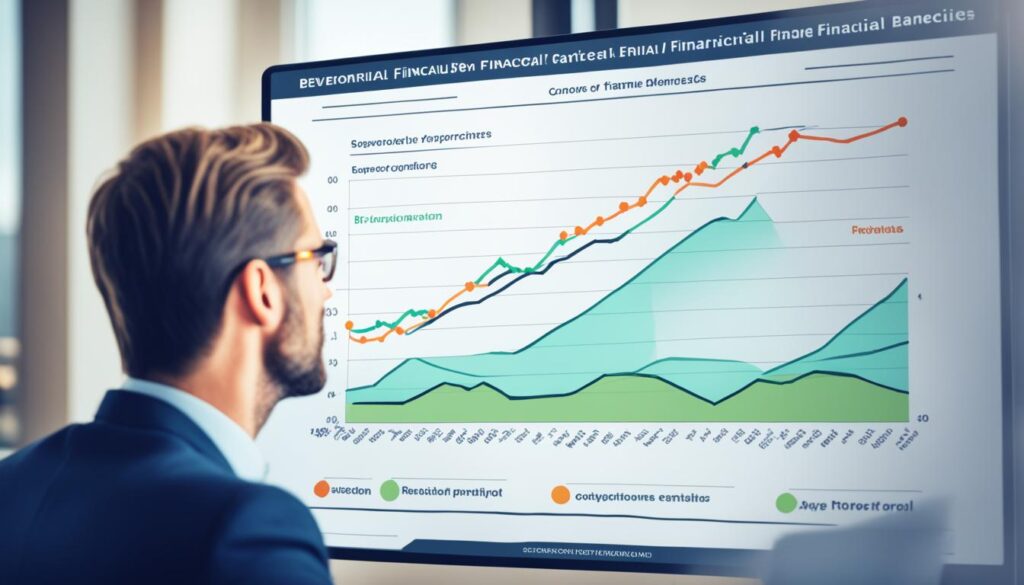The impact of financial advice on behavior is a critical aspect of financial decision-making and money management. While the efficient market hypothesis suggests that market prices efficiently reflect all available information, individual investors often make decisions influenced by cognitive limitations, psychological factors, and thinking biases. This is where the impact of financial advice on behavior becomes crucial.
Financial planning professionals need to understand the motivations, behaviors, and psychology of individuals when it comes to money. Behavioral finance, a branch of behavioral economics, examines how human psychology affects financial decision-making and provides insights into individual investing behaviors and larger investor group dynamics.
By incorporating behavioral finance principles into financial planning, professionals can provide better guidance to clients and help them overcome behavioral biases. This leads to more informed financial decisions, improved financial management, and ultimately, better financial outcomes.
Key Takeaways:
- Financial advice has a significant impact on individuals’ financial behaviors and decisions.
- Behavioral finance explores how human psychology affects financial decision-making.
- Understanding behavioral biases is essential for effective financial planning.
- Integrating behavioral finance concepts helps mitigate the risks of emotional decision-making.
- Behavioral coaching is a valuable tool for cultivating healthy money mindsets and behaviors.
The Role of Behavioral Finance in Financial Planning
Behavioral finance, as a branch of behavioral economics, plays a significant role in financial planning. It explores the intersection of human psychology, sociology, culture, and economics to understand how individuals make financial decisions and how these decisions impact the market. Behavioral finance emphasizes the importance of recognizing cognitive biases and psychological factors that can lead to suboptimal investing behaviors.
By incorporating behavioral finance principles into financial planning, professionals can provide better guidance to clients and help them overcome behavioral biases.
Understanding the intricacies of behavioral finance allows financial planners to tailor their advice and recommendations to the unique needs and behaviors of each client. By recognizing common cognitive biases such as confirmation bias, herding bias, and anchoring bias, financial planners can assist clients in making more informed and rational financial decisions.
Investor group dynamics also play a crucial role in financial planning. By analyzing market trends, sentiment, and the behavior of investor groups, financial planners can gain insights into potential risks and opportunities, allowing them to assist clients in building robust investment strategies.
The Impact on Financial Decision-Making
Behavioral finance provides valuable insights into the decision-making processes that drive financial choices. By understanding cognitive biases and emotional factors that influence decision-making, financial planners can help clients navigate their biases and make more objective decisions.
Additionally, incorporating behavioral finance in financial planning enables professionals to identify and address irrational behaviors that can hinder financial success. For example, behavioral finance can help individuals recognize and overcome the fear of missing out (FOMO), which may lead to impulsive and suboptimal investment decisions.
With an understanding of the role that behavioral finance plays in financial planning, professionals can develop strategies and interventions that promote healthy financial behaviors and guide clients towards their financial goals.
Key Behavioral Biases
| Behavioral Bias | Description |
|---|---|
| Mental Accounting | Individuals categorize money based on different criteria, leading to irrational financial decision-making. |
| Herding Bias | Investors follow trends and mimic the actions of others, driven by the fear of missing out. |
| Confirmation Bias | Individuals tend to seek information that confirms their pre-existing beliefs and disregard contradictory evidence. |
| Anchoring Bias | Individuals rely too heavily on a specific reference point or information when making financial decisions. |
| Loss Aversion | Individuals are more sensitive to losses than gains, leading to risk aversion and suboptimal decision-making. |
| Overconfidence Bias | Individuals tend to have an unwarranted belief in their own abilities and underestimate risks. |
| Familiarity Bias | Investors favor investments in companies or industries they are familiar with, often leading to a lack of diversification. |
Recognizing these biases and understanding how they influence decision-making is essential in mitigating their impact on financial outcomes. It enables financial planners to educate clients about these biases and facilitate more rational decision-making processes.
By leveraging the principles of behavioral finance in financial planning, professionals can empower clients to cultivate healthier financial behaviors, make more informed decisions, and ultimately achieve their financial goals.
Common Biases in Financial Decision-Making
Financial decisions are often influenced by biases that individuals possess. These biases can impact the way people perceive and evaluate financial information, leading to suboptimal decision-making. Understanding these biases is crucial for financial professionals in order to provide effective guidance and support to their clients. In this section, we will explore some common biases that can significantly influence financial decision-making.
Mental Accounting
One common bias is mental accounting, where individuals categorize their money based on different criteria. This bias can lead to irrational behavior, such as treating certain funds differently based on their source or purpose, rather than considering them as a single pool of resources.
Herding Bias
Herding bias is another prevalent bias, particularly in the investment world. It occurs when investors follow trends and make decisions based on the actions of others, often out of fear of missing out. This behavior can lead to market inefficiencies and contribute to speculative bubbles.
Confirmation Bias
Confirmation bias refers to the tendency of individuals to seek out and prioritize information that confirms their pre-existing views and beliefs. This bias can prevent individuals from considering alternative perspectives and conducting thorough analysis, potentially leading to biased and shortsighted financial decisions.
Experiential Bias
Experiential bias is the tendency to place a higher weight on recent experiences when making decisions, while overlooking or downplaying past experiences. This bias can lead to overreaction to short-term market fluctuations or overconfidence in the success of recent investment strategies.
Anchoring Bias
Anchoring bias occurs when individuals rely too heavily on specific reference points or initial information when making decisions. This bias can lead to suboptimal financial choices, as individuals may anchor their expectations or valuations to irrelevant or arbitrary numbers.
Loss Aversion
Loss aversion is the tendency for individuals to feel the pain of losses more strongly than the pleasure of gains. This bias can lead to risk-averse behavior, as individuals are more focused on avoiding losses rather than maximizing potential gains. As a result, individuals may miss out on profitable investment opportunities.
Overconfidence Bias
Overconfidence bias refers to individuals’ tendency to believe that they are more skilled, knowledgeable, or capable than they actually are. This bias can lead to excessive risk-taking and poor decision-making, as individuals may overestimate their abilities and underestimate potential risks.
Familiarity Bias
Familiarity bias occurs when individuals prefer to invest in companies or industries that they are familiar with, rather than considering a diverse range of investment opportunities. This bias can limit the potential for portfolio diversification and expose individuals to unnecessary risk.
Recognizing these biases and their potential influence on financial decision-making is essential for financial professionals. By understanding these biases, advisors can help their clients overcome cognitive limitations and make more informed and rational financial choices.

Integrating Behavioral Finance in Financial Planning
Financial professionals play a crucial role in helping clients overcome behavioral finance issues by incorporating behavioral finance concepts into the financial planning process. By understanding clients’ risk profiles and guiding them in asset allocation, advisors can mitigate the risks of emotional decision-making.
Explaining behavioral finance concepts to clients helps them identify when they are making rational decisions and when they are influenced by biases. It empowers clients to understand the impact of their financial biases on decision-making and make more informed and objective financial choices.
One effective way financial professionals can integrate behavioral finance into the financial planning process is by employing risk profiles. By assessing clients’ risk tolerance, financial advisors can recommend investment strategies that align with their individual risk preferences. This approach helps clients make investment decisions based on their unique risk profiles rather than being influenced by short-term emotions or biases.
Asset allocation is another key aspect of integrating behavioral finance in financial planning. By diversifying investments across different asset classes, financial advisors can help clients manage risk and reduce the impact of emotional decision-making. Asset allocation strategies take into account factors such as clients’ risk profiles, investment objectives, and time horizons, creating a well-balanced portfolio tailored to their specific needs.
| Benefits of Integrating Behavioral Finance |
|---|
| 1. Improved decision-making |
| 2. Minimized emotional biases |
| 3. Enhanced risk management |
| 4. Increased client satisfaction |
By incorporating behavioral finance concepts into the financial planning process, financial professionals can not only help clients make better investment decisions but also provide a deeper level of understanding and guidance. This integration creates a foundation for more successful long-term financial plans and ultimately contributes to clients’ financial well-being.

Behavioral Coaching for Financial Success
Behavioral coaching is a powerful tool that can help individuals achieve financial success by transforming their money mindsets and cultivating sustainable financial behaviors. By combining expertise in behavioral science and financial planning, financial professionals are able to guide clients on a journey of self-awareness and behavioral change.
Through personalized coaching sessions, individuals gain deeper insight into their financial behaviors and develop strategies to align their actions with their financial goals. The process of behavioral coaching empowers individuals to break free from self-limiting beliefs and develop behaviors that drive long-term financial success.
During coaching sessions, individuals are encouraged to explore their money mindsets and uncover any unconscious beliefs or biases that may be hindering their financial progress. By becoming more self-aware, individuals can challenge these limiting beliefs and develop a more positive and empowered mindset around money.
One of the key focuses of behavioral coaching is to help individuals identify and overcome behavioral hurdles that may be preventing them from achieving their financial goals. Whether it’s impulse spending, lack of discipline in saving, or fear and anxiety around money, behavioral coaching provides the tools and strategies necessary to overcome these challenges.
By implementing behavior change techniques and strategies, individuals can adopt new financial behaviors that align with their goals and values. This may include setting up automated savings plans, creating budgets, practicing mindful spending, and developing healthy financial habits.
The Benefits of Behavioral Coaching
- Gain self-awareness: Behavioral coaching helps individuals develop a deeper understanding of their financial behaviors and the underlying factors that drive them.
- Identify and overcome limiting beliefs: Through coaching, individuals can challenge and reframe their limiting beliefs around money, allowing for personal growth and financial transformation.
- Align actions with goals: Behavioral coaching provides individuals with practical strategies to align their financial actions with their desired goals and outcomes.
- Develop healthy financial habits: By implementing behavior change techniques, individuals can build sustainable financial habits that support their long-term financial success.
- Overcome behavioral hurdles: Behavioral coaching equips individuals with the tools and strategies necessary to overcome common behavioral hurdles, such as impulsive spending or fear of investing.
Behavioral coaching is a collaborative process between the individual and the coach, focusing on the specific needs and goals of the client. By leveraging the power of behavioral science and financial expertise, individuals can create lasting change in their financial behaviors and achieve the financial success they desire.
| Benefits of Behavioral Coaching | Key Takeaways |
|---|---|
| Gain self-awareness | Develop a deeper understanding of financial behaviors |
| Identify and overcome limiting beliefs | Challenge and reframe beliefs for personal growth |
| Align actions with goals | Create strategies that support financial goals |
| Develop healthy financial habits | Build sustainable behaviors for long-term success |
| Overcome behavioral hurdles | Equip individuals with tools to overcome obstacles |
How Does Financial Advice Impact Investment Strategies and Financial Behavior?
When it comes to creating successful investment strategies and financial behavior, seeking professional financial advice can make a significant impact. Expert guidance can provide valuable insights and help individuals make informed decisions, ultimately leading to better financial outcomes and more effective management of their investment strategies and financial behavior.
Conclusion
The impact of financial advice on behavior is undeniable. Through a deep understanding of the psychology behind financial decision-making and the incorporation of behavioral finance principles in financial planning, individuals can make more informed choices and achieve their financial goals.
By recognizing and addressing cognitive biases and psychological factors, financial professionals play a crucial role in guiding individuals towards healthy money mindsets and successful financial outcomes. Importantly, behavioral coaching serves as a powerful tool in empowering individuals to overcome obstacles, develop positive financial behaviors, and secure long-term financial success.
The intersection of financial advice, behavioral finance, and behavioral coaching provides valuable insights and strategies for individuals seeking to improve their overall financial well-being. By leveraging this interdisciplinary approach, individuals can navigate the complex landscape of financial decision-making with confidence and achieve the financial future they desire.
FAQ
How does financial advice impact behavior?
Financial advice can influence behavior by helping individuals make more informed and objective financial decisions. By understanding cognitive biases and psychological factors, financial professionals can guide clients towards making better financial choices and cultivating healthy money mindsets.
What is the role of behavioral finance in financial planning?
Behavioral finance examines how human psychology affects financial decision-making. It provides insights into individual investing behaviors and larger investor group dynamics. By incorporating behavioral finance principles, financial planners can better understand clients’ motivations, behaviors, and psychology regarding money, enabling them to provide more effective guidance.
What are some common biases in financial decision-making?
Common biases include mental accounting, herding bias, confirmation bias, experiential bias, anchoring bias, loss aversion, overconfidence bias, and familiarity bias. These biases can lead individuals to make suboptimal financial decisions based on cognitive limitations and psychological factors.
How can behavioral finance be integrated into financial planning?
By incorporating behavioral finance principles into the financial planning process, financial professionals can mitigate the risks of emotional decision-making. They can guide clients in understanding their risk profiles, asset allocation, and financial biases. Educating clients about these biases helps them identify when they are making rational decisions and when they are influenced by biases.
What is behavioral coaching and how does it contribute to financial success?
Behavioral coaching leverages expertise in behavioral science and financial planning to help individuals develop healthier money mindsets and sustainable financial behaviors. Through personalized coaching sessions, individuals gain self-awareness, deeper insight into their financial behaviors, and strategies to align their actions with their financial goals. This empowers individuals to overcome obstacles and develop behaviors that drive long-term financial success.
What is the overall impact of financial advice on behavior?
Understanding the psychology behind financial decision-making and incorporating behavioral finance principles can lead to better financial outcomes for clients. By recognizing and addressing cognitive biases and psychological factors, financial professionals can guide individuals towards making more informed financial choices, cultivating healthy money mindsets, and achieving their financial goals. Behavioral coaching serves as a powerful tool in empowering individuals to overcome obstacles and develop behaviors that lead to long-term financial success.

